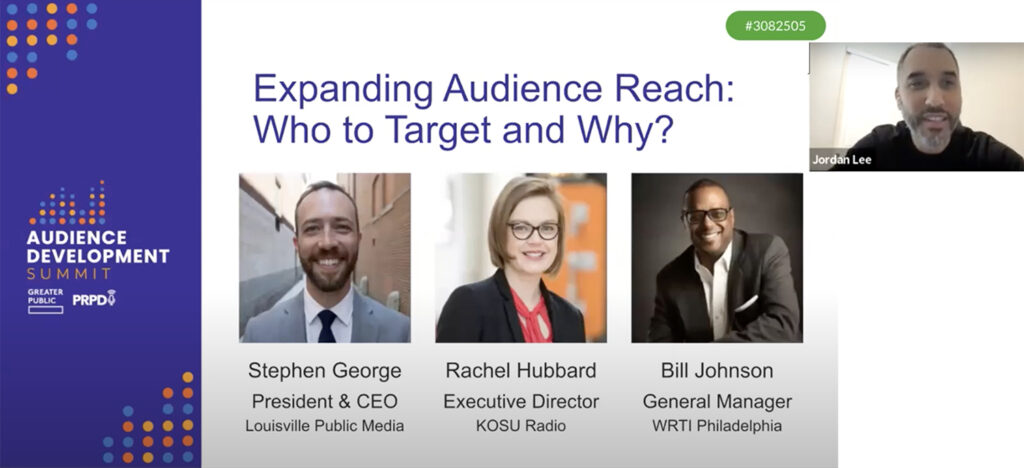Last week, I had the honor to host the first panel of the Greater Public and Public Radio Program Director (PRPD) Audience Development Summit. Throughout the two-day virtual event, leading voices in Public Media offered insights and expertise on ways to offer value and increase reach to younger and more diverse audiences through integrated content, marketing, and development efforts.
On our panel “Expanding Audience Reach: Who to Target and Why?” we heard from three very different organizations that are leading the way in audience development. I sat down with Stephen George, President & CEO, Louisville Public Media, Rachel Hubbard, Executive Director at KOSU Radio in Oklahoma City, and Bill Johnson, General Manager at WRTI Philadelphia, to discuss three subjects…WHO, WHAT & HOW.

Who are they targeting?
From a focus on Indigenous reporting at KOSU, to targeting new segments of the population in Louisville, the common best results came from a very simple first step. That first step was to RESEARCH and LISTEN. By polling their community and conducting listening sessions with residents in Louisville, community members told WFPL that there is a need for balanced and informative news about their city and neighborhoods and served on platforms they already use like Facebook. In Philly, WRTI teamed up with creative incubator REC PHILLY to listen to the younger audiences they wanted to connect with.
What platform, what voice, and what form?
We found a common theme of using social media and the new “airwaves” for connecting to new audiences. Rachel in Oklahoma emphasized to be wary of converting folks from one atmosphere into another atmosphere. They recognize that growing the brand on one platform is different than another. How audience is measured is internally important to the station, but as Rachel pointed out, it is not important to our audience. Instead of trying to keep audience in their own ecosystems, KOSU has fully embraced the concept of growing audience on other platforms as a compliment to growing their own website and broadcast metrics. In Philadelphia, Bill’s relationship with REC Philly developed into programming that has a measurable audience size that never sets foot into the WRTI spaces.
How are they funding these efforts?
To increase service and audience, stations need more than $10 a month. A focus on Major Giving, often with guidance from the folks at Greater Public, was a key component for success in all three of these markets. In Oklahoma, KOSU identified community leaders and major donors who understood their vision for expanding service within indigenous communities. This understanding lead to funding their public service in their community. In Louisville and Philadelphia, they focused funding the hypothesis. The willingness to make a change in the public media landscape is evident.
As Bill mentioned, building trust with younger audiences and new public media users is the first step. They do not yet have a deep trust with our brand, but listening and partnering helps to build trust.
You can watch the entire session, and all sessions, here on the Greater Public YouTube channel: https://youtu.be/NZJz4xlapxU
Learn more about Jordan.

Leave A Comment